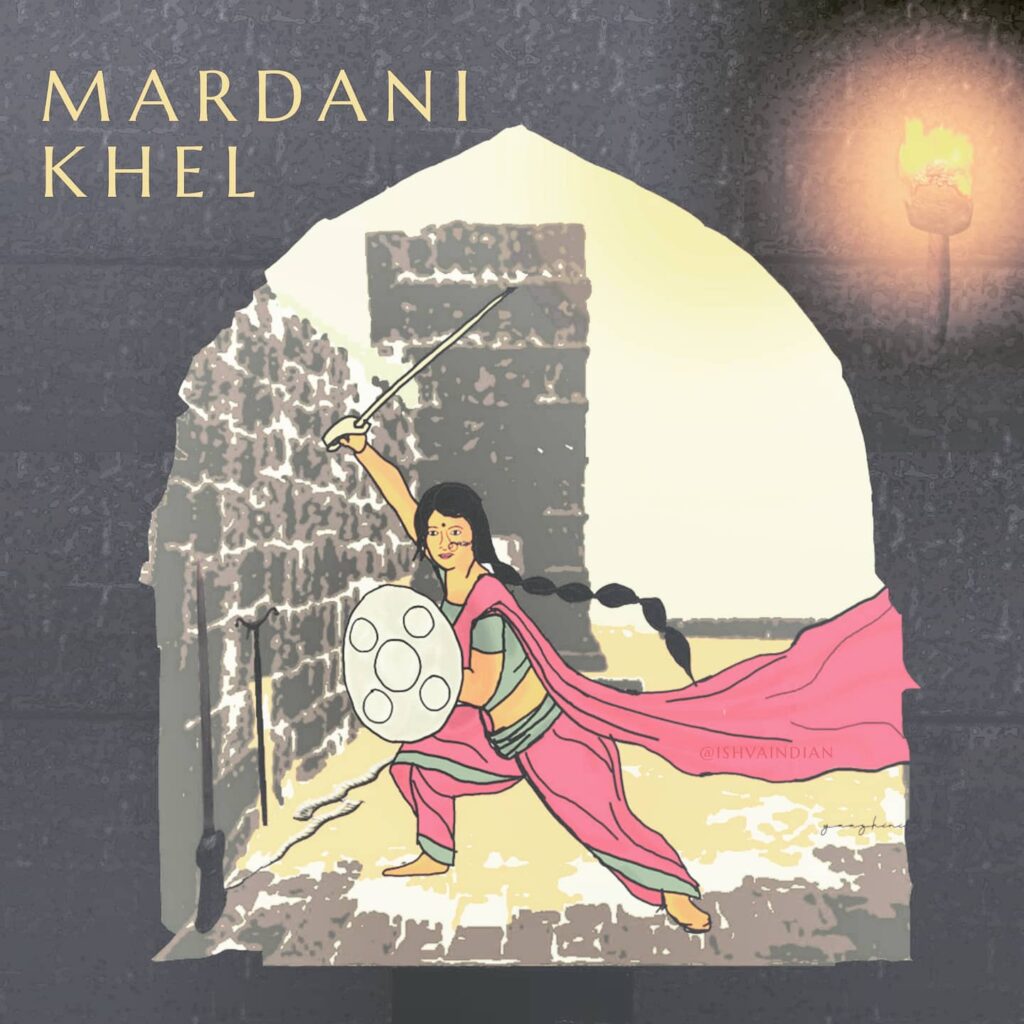Mardani Khel – A great ode to feminism

Mardani Khel is a military martial art which traces it origin to the great Maratha empire, in the hilly terrain of Maharashtra around 17th century. Like many Maratha traditions, it is rooted in and an effect of its geography; the hills, valleys, forts and caves of the Maratha empire inspired this rustic, indigenous weapon-based, light-armoured martial art of Maharashtra.
Tracing Mardani Khel’s history
This weapon based Maharashtrian martial art flourished as a form of military training under the great Chhatrapathi Shivaji and the succeeding Maratha emperors. Legend has it that during the early 1700s, Rani Tarabai Bhonsle, the warrior queen of the Marathas, during troubling times of constant conflicts, enlisted and involved all men, women and even children to be trained in this art. And that’s despite the name Mardani Khel (loosely translated into masculine sport) – such a feminist icon – take a bow, Rani Tarabai!
Kolhapur used to be the centre of the Maratha kingdom and was the base for training during the Maratha era and still remains the heart of mardani khel. Numerous ‘talims’ or training centres were established in Kolhapur and even today many aspiring men, women and young children are shaped into sword weilding warriors in this town!
Weaponry
Mardani Khel teaches 14 different ways to weild a sword, stick or weapon of choice. You can see some super interesting weapons in Maratha warfare such as the madhu, which is shaped like animal horns and has a spear with a rope knotted to one end – also called the ‘Maratha Boomerang’ by the British.
Today, across Maharashtra, in various talims, or parks and school grounds, you can see men wearing special knotted cotton wear called Barahbandi or women wearing traditional Nauvari costumes, spinning and swishing stylised weapons such as patta (gauntlet/sword) and vita (corded lance).
Women warriors
Despite the name, Mardani khel, women have always been at the forefront of training in this sport!
Even today, you can see school students, young women and mothers enroll in Mardani Khel all across Maharashtra, as a form of physical training and to preserve this heritage.
The Kolhapur municipal body devised new programmes, encouraging young women to take up mardani khel as a form of defensive martial art, following the emerging trend of crimes against women across the nation.
During grand festivities of Kolhapur you can also see many women wearing elegant silk nauvaris and tying their baby to the back in a harness fashioned out of cloth and performing swift and lethal skills using swords and shields.
Now and Next
As two sides to a coin, there is a good side and a flip side to the current scenario of Mardani Khel.
Though it is of cultural importance and a great physical therapy, artists feel there is no viable future in pursuing Mardani Khel as a sport, as it has no recognition or certification as a sport compared to other indigenous martial arts of India. Today, it holds the position of a traditional physical art and ceremonial performance in Maharashtra.
On the other hand, it is practised as a performing art and has been exhibited at Commonwealth Games, Military World Games, Women’s Cricket World Cup and many, many other sports festivals.
Competitive sport or not, today thousands of youngsters, girls and boys alike, have taken up mardani khel and are carrying forward this warrior sport to the future!
